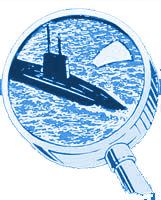
From Draft NOtices, March-April 2001U.S.
Militarism Sank the Ehime Maru!
|

|
|||
|
- Rick Jahnkow "[W]here military power is introduced, Military Maxims are propagated and adopted, which are inconsistent with and must soon eradicate every idea of Civil Government." ó Samuel Adams, 1768When the U.S. submarine Greeneville executed a rapid ascent on February 9 and speared the hull of the Ehime Maru, killing nine people who were on the Japanese trawler, it revealed much more than a tragic failure in seamanship and Navy equipment. For those who care to open their eyes, it also provided an example of the degree to which the U.S. has thrown its own national soul overboard and sunk into the depths of militarism. Much of the attention and debate surrounding the Ehime Maru incident will focus on whether some piece of sonar equipment on the Greeneville malfunctioned or was misread by a sailor, or whether the choppy seas prevented a periscope sighting of the trawler before the submarine rocketed to the surface in an "emergency blow." What will be missing from the debate is any serious examination of the question of why the submarine was executing an emergency blow in the first place. The short answer is that it was done to make an impression on the 16 civilian guests who were onboard and crowded into the Greeneville control room. Admiral Thomas B. Fargo, commander of the U.S. Pacific Fleet, said that the subís commanding officer ordered the maneuver as a "demonstration" for the civilians. According to retired submarine Admiral James Bush, "Of all the maneuvers, the emergency surfacing, which the Greeneville did, is the most knock-your-socks-off dramatic." Clearly, it was done solely for the civilians. As retired Vice Admiral Jack Shanahan told the L.A. Times, "It obviously wasnít a training exercise because they werenít training their own people." One of the guests on the Greeneville was even allowed to pull the lever that initiated the rapid ascent -- which killed nine people. But the most critical question is why were the civilians even there, and why were an estimated 14,000 other civilians brought onto U.S. ships in the Pacific Fleet alone last year? In January of 1999, then-Secretary of Defense William Cohen gave a speech decrying what he believed to be a weakening of links between the armed forces and civilian society. He announced a campaign to reverse this trend and stated, "What we want to do is reconnect America to its military." In February, two years later, National Transportation Safety Board member John Hammerschmidt spoke to journalists about the NTSBís investigation of the sinking of the Ehime Maru by the Greeneville. He read to reporters from a May 10 Navy personnel memo that described the need for greater outreach to the public. The goal, as the memo stated, was "reconnecting America with its military." Obviously, William Cohenís campaign is being carried out, with the Navy proceeding full steam ahead. Official Navy policy expresses the hope that on-board experiences will win over civilians who are "active and influential in their community, business or government." "To a certain extent," according to retired Admiral Bush, "we want to show people the money they spent building submarines is worthwhile. . . . People who ride submarines are always impressed." After spending a day aboard the aircraft carrier Constellation, Bob Griego, a member of the Chula Vista, Calif., school board, told a reporter, "It was awesome. I came back a total believer in what those kids are doing for us." Another civilian, Sheila McNeill of Kings Bay, Ga., said, "Everyone I know who has done one of these cruises has come back more patriotic, more energized and a great recruiter for the Navy." Clearly the reason why these individuals, the 16 civilians on the Greeneville, and thousands of other "guests" are being hosted on ships and military bases around the country, is to turn civilians into lobbyists, recruiters and propagandists for the Pentagon -- in short, to expand the political power of the armed forces and obliterate from memory the earlier, traditional view in this country that freedom is jeopardized when civilian values and institutions are subjected to the militaryís influence. There may have been some human or equipment failures onboard the Greeneville, but the nine students, teachers and crewmembers who died on the Ehime Maru were not just victims of a nautical mishap. In reality, they were killed by U.S. militarism! Information sources: Los Angeles Times, February 15, 22 and 23, 2001. This article is from Draft NOtices, the newsletter of the Committee Opposed to Militarism and the Draft (www.comdsd.org). |
||||